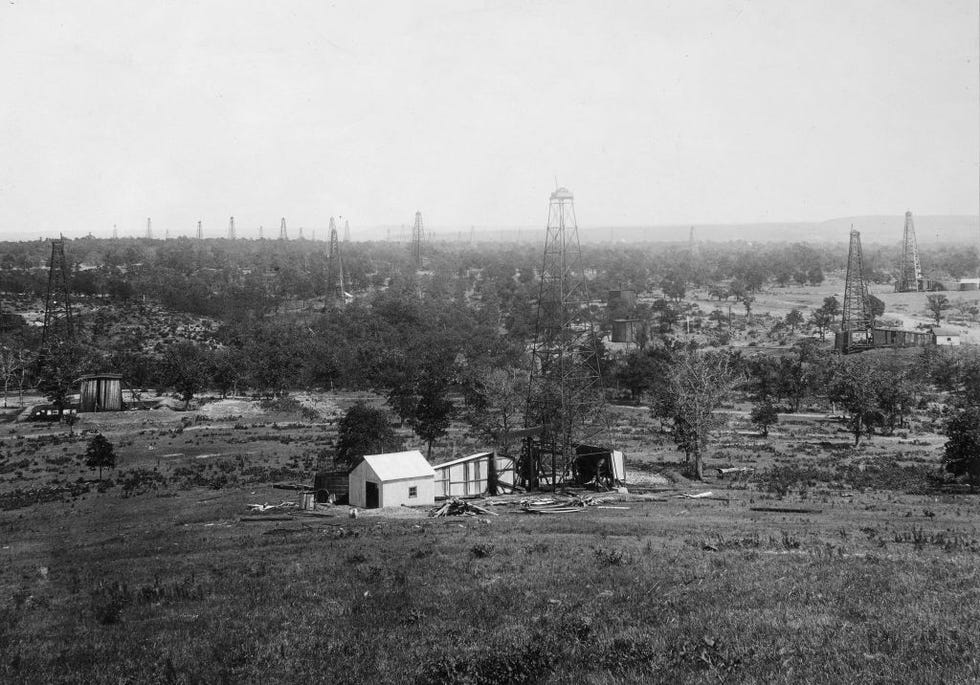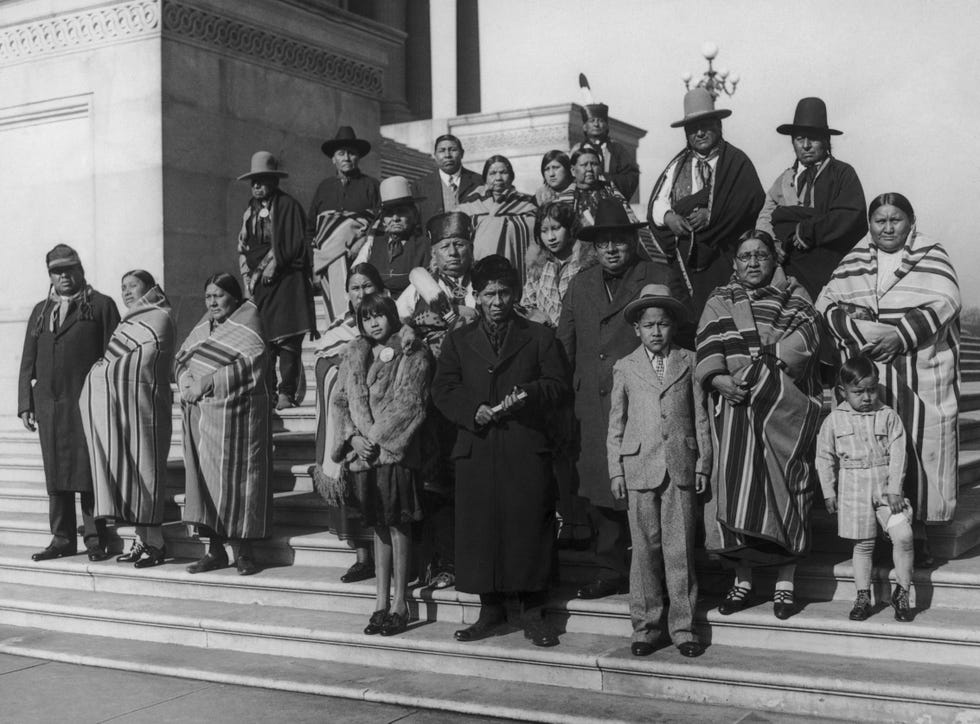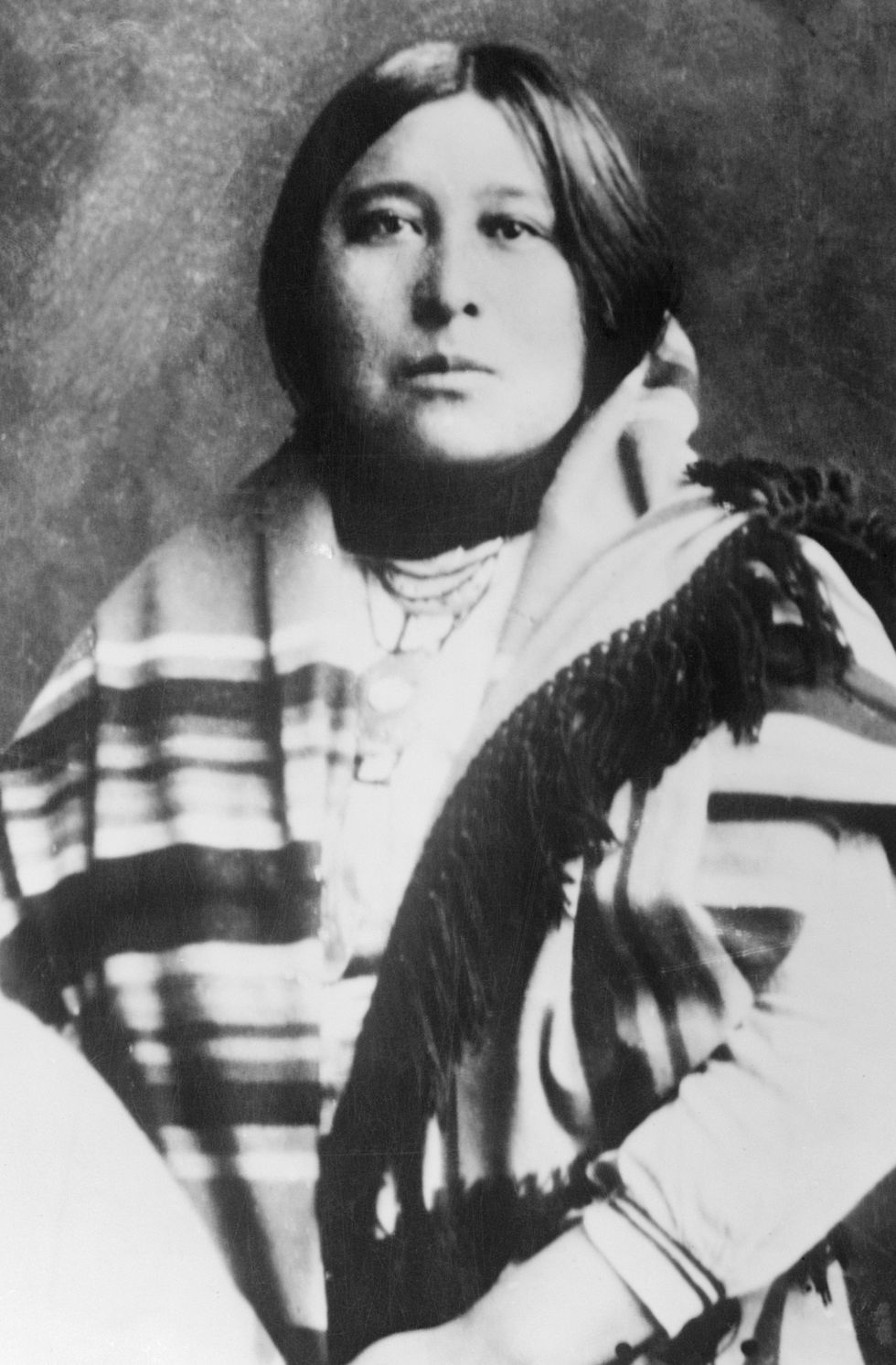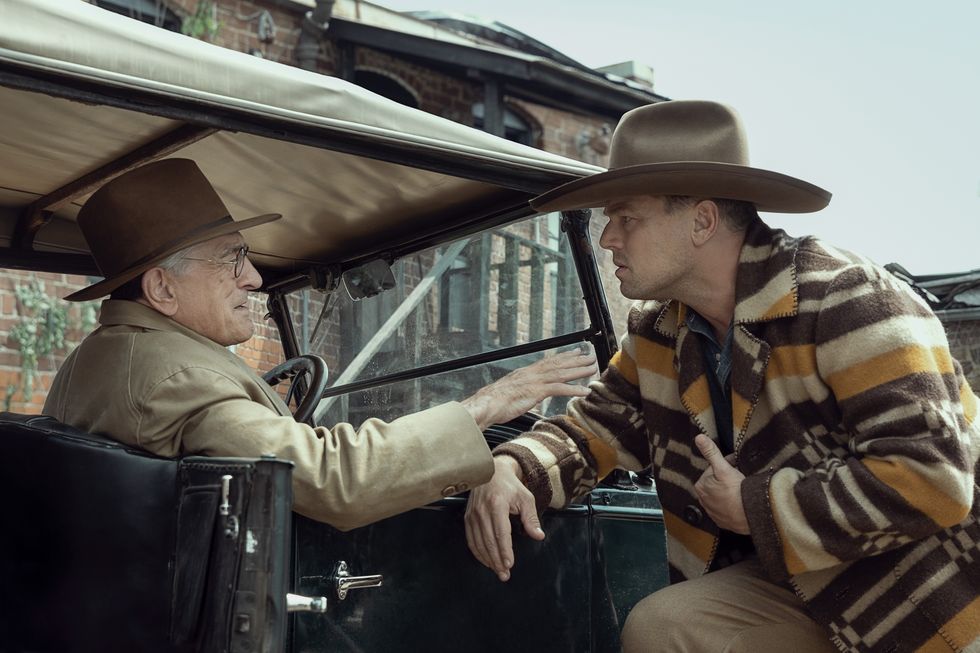At the center of Martin Scorsese’s latest star-studded epic is the tragedy that befell the Osage Nation in the early 20th century, when white settlers, scheming to tap into the wealth from the Native American nation’s oil-rich lands in Oklahoma, conspired to murder dozens of members of their community.
Killers of the Flower Moon, based on David Grann’s 2017 nonfiction book of the same name, explores the “culture of killing” and systemic erasure that enabled the white settlers and federal government to not only dispossess the Osage people of their land, but also terrorize the families who had the headrights for the lucrative oil profits. This period of horrific, bloody history has aptly been called “the reign of terror.”
“I thought I was writing a book about this singular evil figure who had been apprehended by the FBI,” Grann told Smithsonian Magazine. “Instead, I began to realize that this was less a story about who did it and who didn’t do it. It was really about a culture of killing and a culture of complicity … [with] many of these murders carried out by individuals who were profiting from this very corrupt system of targeting the Osage, often marrying into their families and then plotting to kill them to steal their oil money and inheritance.”
Scorsese tapped Leonardo DiCaprio and Robert De Niro to play nephew-and-uncle duo Ernest Burkhart and William Hale, who plot together against Ernest’s wife’s family, but it’s Blackfeet actor Lily Gladstone’s performance as Ernest’s wife, Osage woman Mollie Burkhart, that pumps the heart of the film.
Ahead, we break down the real true story and the historic figures featured in Killers of the Flower Moon.
What is the connection between the Osage Nation and the discovery of oil in Oklahoma?
In the late 19th century, the Osage Nation became one of the only Native American nations to buy its own reservation, which was settled in northeast Oklahoma, after the U.S. federal government and white settlers forced the tribe to leave their ancestral homelands, which included what is now modern-day Arkansas, Illinois, Missouri, Kansas, and Oklahoma. The Osage’s legal purchase of 1.5 million acres of land (which is now Osage County, Oklahoma) limited the government’s power to divide tribal lands into “allotments” and sell surplus land parcels to white settlers, as allowed under the 1887 Dawes Act.
Instead, Osage chief James Bigheart was able to negotiate with Illinois senator John Palmer for the headrights (or the share of profits from oils, coal, and minerals extracted from the land) of 657 acres to be given only to full-blooded Osage people. In essence, this meant only Osage people collectively owned the rights for the minerals, no matter who technically owned the land the minerals were found on. As NPR explains: “To divvy up the profits from the collectively owned mineral rights, a new system was put in place. Each of the 2,229 Osage members on the tribal rolls in 1907 was given an equal share of the money coming in, what would come to be called a ‘headright.’ Private companies would lease land from the tribe in order to extract oil, gas, gravel, or coal, and then pay a percentage of what they made into a trust managed by the Bureau of Indian Affairs. The BIA, in turn, would distribute payments from that trust to headright holders.”
In the 1890s, large reserves of crude oil were discovered under the lands that made up the Osage reservation—which benefited the community exponentially. Royalty revenue from the oil production made the Osage the wealthiest people in the world, per capita. The riches, however, also soon attracted the attention of non-Natives looking to cash in.
What was the “reign of terror”?
In 1906, Congress passed the Osage Allotment Act, which directed the inheritance of headrights to the deceased’s legal heir, even if that heir was not Osage. This opened the door for a murderous scheme that resulted in a string of mysterious killings over the course of a few years during the early 1920s. The streak of violence took the lives of at least 24 Osage members, though historians speculate that the true number of victims is much higher. The killings, many of which were plotted by white settlers who had married or ingratiated themselves into the Osage community, were part of a plot to eliminate the Native headrights holders and inheritors, as orchestrated by cattleman William Hale. Most of the victims were wealthy Osage men and women who were executed by gun, poison, or even bombings.
In the mid-1920s, an Osage delegation traveled to Washington, D.C., to lobby the federal government to investigate the deaths. The delegation also brought up issues with the court-appointed white guardians assigned to Osage adults by the government. These conservatorships were ostensibly designed to “help” community members manage their finances, but in reality, worked more like a racist ploy that undermined Native autonomy and enabled white guardians to swindle the Osage out of their own money.
“We paid at that time, in the ’20s, $20,000 to hire the FBI to find the killers of our people that were being murdered,” Osage businesswoman Danette Daniels recalled to The Oklahoman in 2021. “And a big part of the scandals are these guardianships. So, white business owners, the well-to-dos of the town, had these guardianships of the Osage people. A lot of the Osage people were given a $20 allowance, and then [the white guardians] took off with the rest of the money.”
Who were Ernest and Mollie Burkhart?
The heart of Killers of the Flower Moon is Mollie, an Osage woman who married William Hale’s nephew Ernest Burkhart in 1917. Ernest and his younger brother Bryan ended up being instrumental in the killing of Mollie’s mother and three sisters: Anna, whose decomposing body was discovered in a ravine; Reta, who died when her house was bombed; and Minnie and mom Lizzie, whose deaths were ruled to be the result of a suspicious illness.
Unbeknownst to Mollie, Ernest had begun to slowly poison her, too. She initially stood by her husband when he was accused by investigators of playing a role in the killings. But when Ernest eventually confessed to the crimes, Mollie divorced him. As Vox explains, she successfully sued to end her guardianship in 1931, thus retaining full control of her family’s wealth in spite of Ernest’s violent scheme to steal it from her. Mollie went on to remarry and died at age 50 in 1937.
The couple’s granddaughter, Margie Burkhart, reflected on Ernest’s violent legacy in an interview with People. “I have a lot of anger towards him,” she told the outlet. “He took away my whole family. He took away potential cousins. I don’t have any relatives on my Osage side.”
Did Ernest Burkhart and William Hale face any consequences?
Ernest and William were arrested in 1926 for the murders of Mollie’s sister, Reta, and her husband, Bill Smith. According to Grann’s book, Ernest confessed to his role in the murder plots upon hearing that outlaw Blackie Thompson was willing to testify that Ernest had hired him for the killings. The trials captivated the American public, with the case breathlessly reported and followed in newspapers across the country.
Ernest ultimately plead guilty and testified against his uncle. He received a life sentence in prison, though he was granted parole in 1937. He returned to prison after robbing a bank and was thereafter released in 1959. Oklahoma governor Henry Bellmon granted him a full pardon in 1965, and Ernest died at 94 years old in 1986.
Meanwhile, Hale was also sentenced to life in prison and served 18 years at Kansas’s Leavenworth Penitentiary before being granted parole in 1947. He died at age 87, in 1962.









